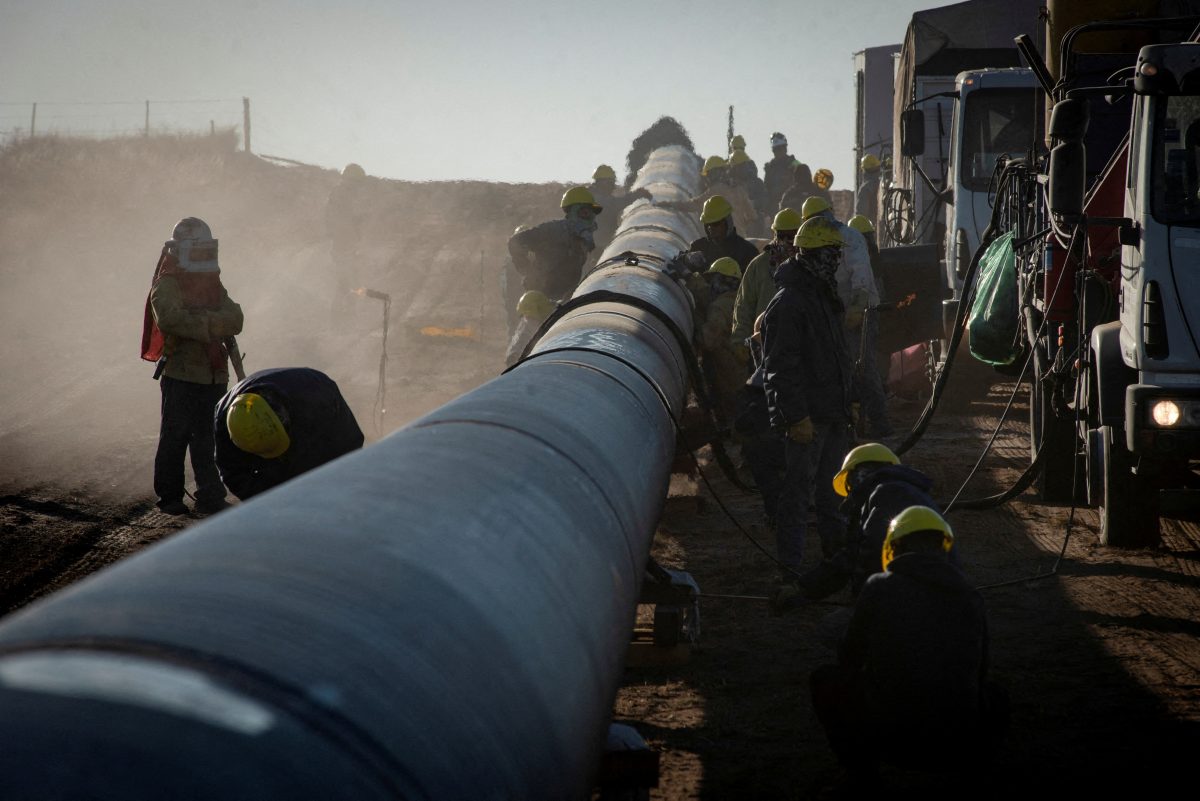HOUSTON/BUENOS AIRES, (Reuters)
– Energy companies from Argentina and Brazil have begun talks on reversing the southerly flow of a Bolivian natural gas pipeline network that connects the three countries as a regional gas deficit could force Brazil to pay up for alternative supplies of the fuel.A preliminary proposal on the pipeline shift has failed to gain traction with Bolivia, according to executives and sources, leaving Brazil increasingly exposed to volatile prices of liquefied natural gas (LNG).
Brazil has made clear in recent months that gas from Argentina, which has the world’s second largest shale gas reserves, will be needed to balance supplies. Exports from Bolivia, which once was a prominent producer in the region, have declined rapidly and may not be available after 2029, say experts.
The fastest and cheapest option to address the regional shortfall may be to export gas from Argentina’s Vaca Muerta shale formation by reversing a network of Bolivian pipelines that has brought gas south.
But Argentina’s government under new President Javier Milei must first complete key transport projects to bring its gas to the border with Bolivia and build the commercial framework needed for negotiating tariffs, according to executives and experts involved in the talks.
Bolivia’s government and state company YPFB in recent months rejected an initial proposal by Argentina and Brazil to pay a tolling fee for the passage of Argentina’s gas across its territory, three executives from the companies involved said.
The Andean nation has proposed that it import Argentine gas and resell it to companies in Brazil, they added. That plan was rejected by the counterparties as it would lead to significantly higher import costs for Brazil.
“It’s a commercial problem,” said Mauricio Tolmasquim, chief energy transition officer at Brazil’s state-controlled oil company Petrobras PETR4.SA, one of the largest receivers of Bolivia’s gas.
“We have to find some common ground,” he said last month on the sidelines of the CERAWeek conference in Houston.
Argentina wants to solve domestic transportation bottlenecks this year to balance its gas distribution and begin planning exports. For its part, Bolivia must agree to negotiate terms to provide gas passage.
If both happen, Argentine gas could begin flowing to Brazil next year during the low-demand season in Argentina, said Alvaro Rios, director of consultancy Gas Energy Latin America.
Bolivia’s and Argentina’s governments and YPFB did not reply to requests for comment.
LNG prices hit a record high in 2022, sparked by Moscow’s invasion of Ukraine, but have slumped to their lowest level in nearly three years after weaker-than-expected demand due to a mild winter and high stockpiles in the U.S., Europe and Japan.
FILL THE LINE
Petrobras would prefer to receive more gas to fill its pipeline from Bolivia, which is currently running at about 60% of capacity, Tolmasquim said.
“If Bolivia can increase (supply) for Brazil, that would be perfect because then we can find another way to bring the gas from Argentina, (such as) building another pipeline to the south of Brazil or we can resort to LNG,” he added.
However, the Andean nation until last year was unable to fulfill volumes negotiated with Brazil. Petrobras in December agreed to amend its Bolivian gas contract to keep imports at up to 20 million cubic meters per day. The deal also allowed seasonal flexibility and extended the timeframe to achieve the total supplies, the company said.
Argentina, the second largest receiver of Bolivian gas, plans to cease imports in October if it completes an expansion of its own gas network to bring more gas from the Vaca Muerta fields to its northern provinces, gas providers have said.
The country also is trying to advance two large LNG projects, one by Malaysia’s Petronas PETRA.UL and state-owned company YPF YPFD.BA, and another by oil and gas producer Tecpetrol.
“The current bottleneck is at Argentina’s pipelines. They want to negotiate with Bolivia, but they must first reverse their own gaslines’ flow and secure gas to the border. They also must work on tariffs and regulations,” said Rios.
Bolivia’s supply to Argentina has declined to as low as 2 million cubic meters per day (mcm/d), a fraction of Argentina’s 130-mcm/d consumption, said Ricardo Markous, CEO of Tecpetrol, which produces gas in Argentina and Bolivia.
A gas export increase from Bolivia, whose production has fallen about 45% in the last eight years to some 34 mcm/d, is unlikely in coming years, Rios said.
“Bolivia by 2029 will no longer have gas to export because domestic demand will match production capacity. The production decline has been accelerating every year,” he added.
Its decline is expected to increase the pressure for alternative supplies, experts and sources said, especially if prices for LNG, which has been the alternative for Brazil and Argentina in recent years, climb again.









